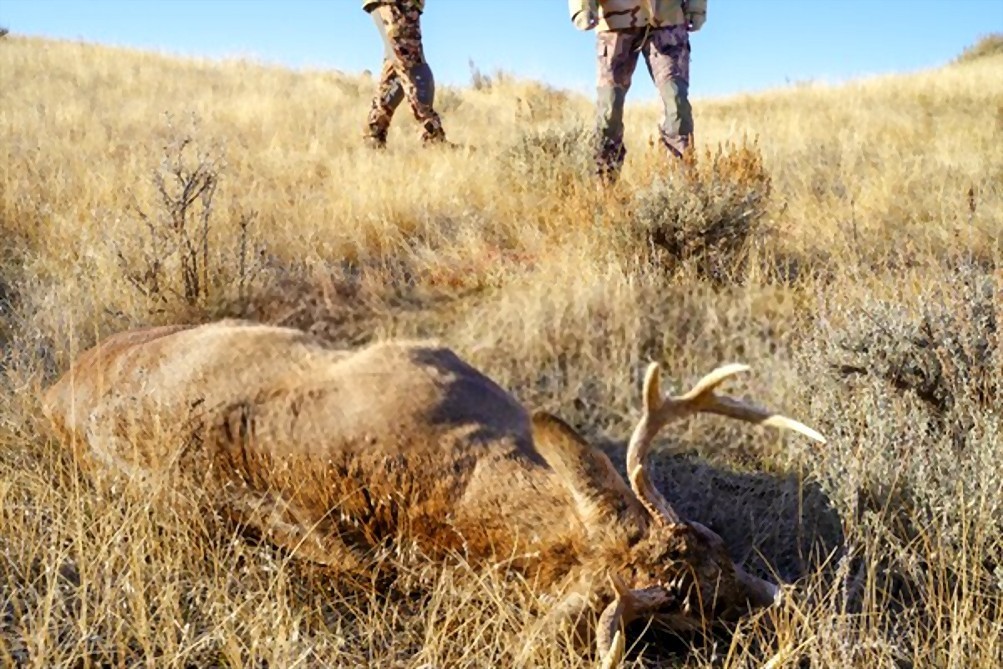When you’re hunting deer, I’m sure you’ve already experienced the frustration of tracking them without blood trails! While you might think it’s the end of the hunt, it’s still possible to find your catch without trails! But how can you do that?
There are a lot of ways on how to find a deer with no blood trail. So read on as I show you different tips you can follow to track your targeted deer even without any signs of blood and whatnot!
Table of Contents
Why the Blood Trail Ends
There are many different reasons as to why blood trails end after shooting deer, such as:
- Superficial muscle wounds can result in coagulation, which would reduce the amount of blood that reaches the ground. This usually happens when you shoot a deer in the neck, leg, or shoulder.
- High wounds like those located on the back would usually result in little blood reaching the ground.
- Wounds on the stomach or intestines will have blood reaching the ground, but it can stop completely or decrease to a few drops every 20 yards or so.
- Entry and departure holes would be clogged with tissue, preventing external bleeding. Paunch wounds would do the same, while liver wounds would cause internal bleeding only.
Regardless, it still means that you’ve hit a deer successfully and you should continue the search to recover it. You’ll be able to learn how to shoot deer successfully and leave a good blood trail and recover them quicker afterward!
How to Find a Deer With No Blood Trail
We all know how irritating it is to lose a blood trail when you’ve shot a deer successfully! To find your wounded deer, here are some helpful tips to follow:
1. Go Back to Where You Shot
If you lost the blood trail or couldn’t find any, go back to the area where you made the shot. Replay the last moment and remember what happened.
Did you take a solid shot or hit too far back or forward? How did your targeted deer react, did it bold or hunch back?
When you have that image in mind, check the ground for any disruption of where it was hit. The area should be torn up and you’ll be able to find a clear track of the wounded deer. If you think you took a gutshot without a blood trail, it’s time to act quickly and find the deer to take a finishing shot!
Besides this, you should also analyze your shot, knowing where it landed and how that deer reacted. If the deer kicked, jumped, and darted, then you might have caught the vitals, so they aren’t over 100 yards away.
For those that shot it in the stomach, they’ll most likely bed down, taking a few hours before you should begin heading for it.
2. Deer Move In Circles
Your targeted deer will most likely try running up to 60 yards and go downwind. If you lost the track or are unable t find it, walk in a 40-yard circle from the last area you remembered seeing it.
Move slowly and make sure your eyes are open for blood, deer, or any sight of disturbance in the area that helps you get to it.
3. Head to the Bedding Areas
Deer would usually head to the water, so you can check out the nearby water sources. However, that’s not always the case.
When deer get hurt, they would usually head to areas where they feel safe, which are the places they bedded down that night. Head over there to see if your wounded deer is there, or to the nearby sanctuary area if you have one around your property.
4. Call Dogs and Friends
If your state allows it, then get a tracking dog to help recover your wounded deer. While it isn’t a guarantee that you’ll recover the deer, they have a better sense of smell than you do. They’ll be able to bring you even closer, or to the deer themselves.
If you have no tracking dog, you can get help from friends, who have experience in hunting. The more eyes can help you find that deer!
Read more: How to Find Deer In the Woods
Learn more about tracking deer without a blood trail in this video:
Wrapping It Up
Lack of a blood trail doesn’t mean you won’t be able to recover the wounded deer. Not only should you have a positive attitude, but you should also make sure you know why blood ends and learn other ways to track deer. This will help you in finding any deer or animal you hit in the future.
I hope my article taught you how to find a deer with no blood trail effectively. So don’t wait any longer and follow these tips if ever you’re in a sticky situation again.

